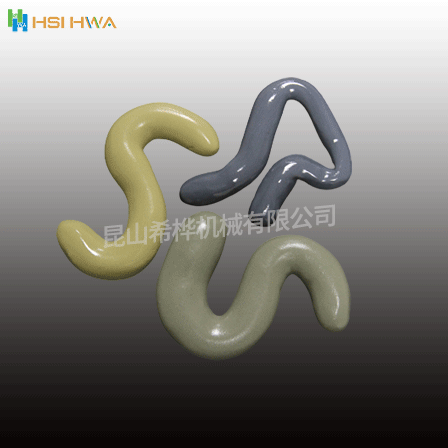Principle of Extrusion Honing:
The workpiece is fixedly installed in a clamp, and the clamp is pressed by two upper and lower squeezing cylinders containing grinding media. During processing, the pistons in the upper and lower extrusion cylinders are driven by the hydraulic system to move up and down synchronously, thereby pushing and squeezing the grinding medium to repeatedly pass through the processed surface of the workpiece, and the grinding effect is produced by the abrasive particles. The extrusion force used for processing is 1 to 3 MPa, and some are as high as 10 MPa. The grinding medium is uniformly mixed with abrasive and matrix medium (a kind of semi-solid polymer). In actual use, a certain amount of additives such as lubricants, plasticizers and viscosity reducers are added according to different processing objects to change the physical properties of the matrix medium such as viscosity and fluidity. Abrasives generally use silicon carbide or aluminum oxide, and sometimes boron carbide or diamond powder is also used. The abrasive particle size range is 20#~600#. Coarse abrasives are used for deburring, and fine abrasives are used for polishing. The abrasive content is 10-60%, depending on the specific processing conditions. The fixture allows the grinding medium to pass through the surface to be processed according to the prescribed path, and at the same time also plays the role of installing and fixing the workpiece, so the fixture structure should be designed and manufactured according to the shape, size and processing requirements of the workpiece. Multi-station fixtures can be used for small workpieces, and many workpieces can be installed at one time for processing. The fixture materials generally use wear-resistant tool steel and nylon, etc., but also can use materials such as carbon steel or aluminum, which can be replaced after wear. The clamp must have sufficient strength and tightness.
Generally, it has a vertical structure and is divided into two types: fully automatic and semi-automatic. The main components of the machine tool are worm screw jack, main hydraulic system, auxiliary hydraulic system, control circuit and auxiliary equipment. The operating control parameters of the machine tool are the extrusion force, the flow of the grinding medium, the number of processing cycles and the cycle time.
Application of Extrusion Honing
In the processing of fuel injection nozzles and some tiny holes, most domestic production plants are still using drilling technology to process injection holes. The nozzle holes processed by this process have poor roughness, flanging burrs in the pressure chamber, and the flow coefficient of the nozzle is only 0.5 to 0.6. In order to meet the increasingly stringent emission regulations, diesel engines require the flow coefficient of the fuel injector to be above 0.8, and its flow coefficient needs to be further improved. At present, the liquid extrusion grinding process is widely used in the world. Since the ratio of the hole diameter D to the nozzle hole diameter d, D/d, is large (about 20), and the cross-sectional area ratio is the square of D/d (about 400), the abrasive in the hole and The flow velocity in the nozzle hole differs by about 100 times. The cutting effect of the abrasive can only work at a certain speed, that is, under the action of high pressure, the abrasive enters the middle hole of the fuel injection nozzle from the clamp pressure head, passes through the pressure chamber of the fuel injection nozzle, and passes through the nozzle hole at high speed; The hole produces a flow of cutting abrasive particles, which can micro-grind the nozzle burrs and nozzle holes in the pressure chamber; grind the fillet at the nozzle entrance and increase the roughness of the hole wall without damaging the injection nozzle after finishing The accuracy of the hole and seat surface.
During the machining process, the main factors that affect the extrusion and grinding effect of the nozzle hole are: the working pressure P of the abrasive material; the processing time S; the cutting performance of the abrasive material; and the forming process of the nozzle hole. It can be seen that, according to the tolerance of the drill bit during drilling and the burr during drilling, the sharpness of the drill bit affects the aperture size of the nozzle hole and the size of the burr. In order to achieve the same nozzle flow rate, when the same abrasive is used, it is necessary to adjust the working pressure P or the processing time S of the abrasive. Therefore, for fuel injectors processed in different batches, the flow rate should first be detected on the flow test bench and grouped; the working pressure P of the abrasive or the processing time S should be determined according to different flow values.
Tests have proved that after extrusion and grinding, the burrs at the pressure chamber and the nozzle hole can be eliminated, the fillet at the intersecting line can be enlarged, and the pressure loss of high-pressure oil can be reduced; the surface roughness of the nozzle hole can be reduced, and the oil flow rate can be increased. A good atomization effect is obtained; the flow coefficient of the fuel injection nozzle can be increased, so that the dynamic spray angle and flow rate tend to be the same, and the fuel consumption and emission indicators of the diesel engine are reduced.
